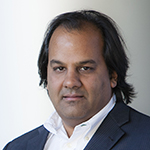March 2016

Atul Malhotra, MD
With some combination of amusement and concern, I am watching the political process unfold in this election year. I was reminded of a speech that I had heard some time ago. Ronald Reagan gave a speech in 1988 which still resonates for me today. Although one could debate how much impact he had on science and research, I think the message he provided still has value today.
For example when talking about hope, “This … is a good time for all of us to reflect on the enduring importance to mankind of hope and faith in the future. And nowhere do our hopes take more visible form than in the quest of science.”
He continues to say:
“Science has grown, and with it, the fascination it holds for all of us. But as the pursuit of science has become ever more nationally and even multinationally funded, it has also become more expensive. The problem here is that science, unlike a bridge or an interstate highway or a courthouse, has no local constituency. Today, when we’re witnessing some of the most exciting discoveries in the history of science, things similar to the breakthroughs associated with Einstein, Galileo, and Newton, federal funding for science is in jeopardy because of budget constraints.
“The remarkable thing is that although basic research does not begin with a particular practical goal, when you look at the results over the years, it ends up being one of the most practical things government does. For example, government-sponsored basic research produced the first laser. Today, less than three decades later, lasers are used in everything from microsurgery to the transmission of immense volumes of information and may contribute to our Strategic Defense Initiative that promises to make ballistic missiles obsolete. Well, I think that over the past 50 years the government has helped build a number of particle accelerators so scientists could study high energy physics. Major industries, including television, communications, and computer industries, couldn’t be where they are today without developments that began with this basic research.
“Some say that we can’t afford it, that we’re too strapped for cash. Well, leadership means making hard choices, even in an election year. We’ve put our research budget under a microscope and looked for quality and cost effectiveness. We’ve put together the best program for the taxpayers’ dollars. After all, the American tradition of hope is one we can’t afford to forget.”
I remain proud of the ATS and its conference motto, “Where today’s science meets tomorrow’s care.” This concept succinctly captures a core mission of ATS and hopefully won’t be lost on today’s politicians.

